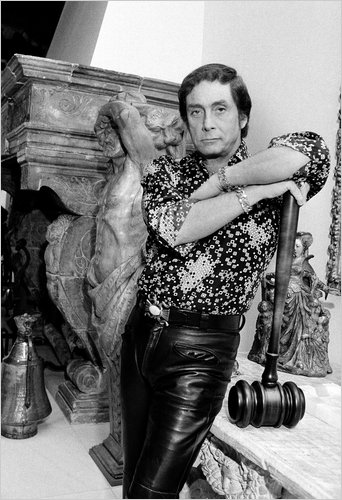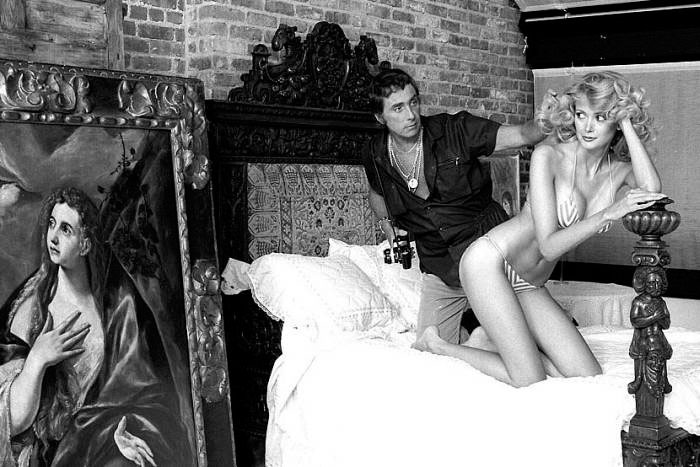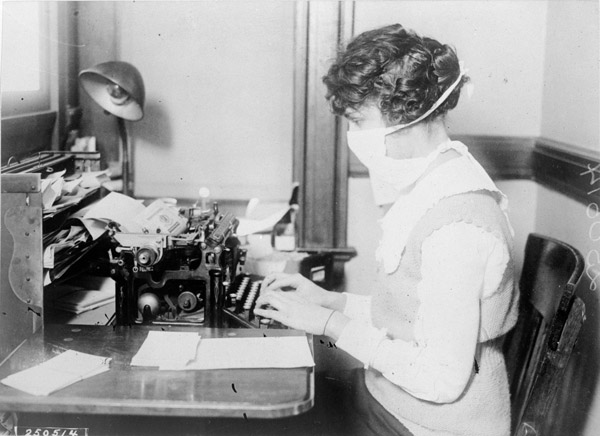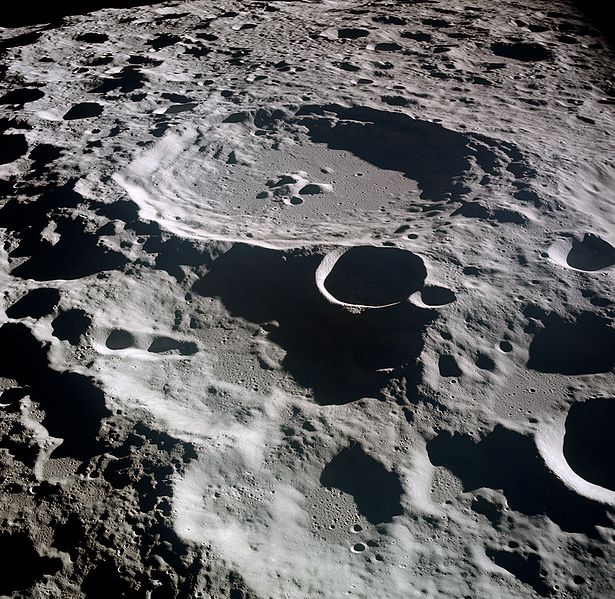
Omni magazine was the fascinating science journal turned out by pornographer Bob Guccione, whose face and pants were both made of leather. The singular publication was by turns brilliant and bullshit and batshit. Claire Evans of Vice recently got to visit an awe-inspiring archive of the defunct mag and filed a report. An excerpt:
“When I was given, offhandedly, in an email, a shot at poking through this collection, I’d imagined long tables stacked with documents and boxes brimming with unpublished science-fiction gems. I was told it was an archive, and, to me, the word ‘archive’ implied something academic, a facility staffed by white-gloved attendants. Instead, the OMNI archive is a nebulous assortment of filing cabinets, piles of paintings, folders haphazardly stuffed with printing acetates and doodles—all strewn about a medical-supply sales office in Englewood, New Jersey. There are attendants, but they aren’t librarians; they’re employees of Jeremy Frommer, a financier and fast-talking entrepreneur who came upon the collection accidentally, when a storage locker he bought on a whim last November happened to contain a sizable chunk of the estate of Bob Guccione, lord and master of the Penthouse empire and, less famously, publisher of OMNI magazine.
Guccione, if he is remembered at all, is usually mythologized as a kitsch tycoon dripping with gold chains, shirt open practically to his waist. His 27,000-square-foot home in Manhattan was the largest private residence in the city. He collected Van Gogh and Picasso paintings and filled his homes with busts of Caesar, Napoleonic sphinxes, and hand-molded brick shipped from Italy. He was a recluse, by some accounts. He shot the early Penthouse pictorials himself. And he loved science fiction. Jane Homlish, Bob’s personal assistant for 37 years, who I met in Englewood, explained it to me this way: ‘He always said that people with genius minds—and his mind was established as genius—were always as fascinated with sex as they were science.’
Bob Guccione died in 2010, by which point OMNI magazine was long gone—but in Englewood, they both live on. Sheet after sheet of slides are being dusted off, examined, and photographed. Original cover artwork from the magazine is being hunted down. Paintings are being uncrated. People like me are being brought in, simply to marvel at the goods. In one afternoon, I found cover drafts with greasy pencil notations, thousands of 35-mm slides, large-format chromes, magazines bundled with stapled paperwork, production materials, and untold amounts of photos and artwork. It’s chaos. Everything is still being fussed through and tossed around; after his storage unit mother lode, Jeremy got the bug, and the OMNI collection keeps growing. He has but one goal: to own the most complete collection in the world of ephemera relating to this largely forgotten magazine. ‘I don’t think there is anything like this collection,’ Jeremy told me. ‘I don’t even think it exists for a specific magazine, let alone the coolest geek sci-fi magazine of the 80s and 90s.'”
•••••
Guccione discusses Omni and other topics. Crappy footage but worth it.
Omni commercial from 1978, with a voiceover by the Gooch:





